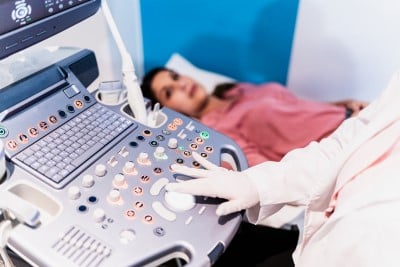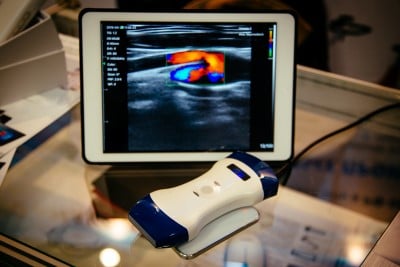It is easy to take for granted the foundation that makes EM residency POCUS training so robust. The very things that make POCUS valuable in our training here in the United States also make it an ideal tool in low-resource settings. As such, global EM is well-suited for long-term initiatives such as starting a POCUS program.
Though POCUS may seem like an easy fix in settings that lack easy access to XR, CT, and MRI, many barriers must be addressed before POCUS can provide tangible benefits to patients, providers, and the local system. Identifying and working to overcome these obstacles requires understanding the regional medical landscape and a commitment to long-term local partnerships.
When I (lead author Irbert L. Vega, MD) went to the Dominican Republic for my global EM elective, I suddenly found myself in an environment where POCUS was still a nascent technology instead of a standard part of the department workflow. I went from thinking about advancing my own skillset to joining a team grappling with bringing the next generation of EM providers up to speed on a skill that is not yet widely taught or accepted.
A Specialty in its Infancy
Emergency medicine, having been first recognized in 1979, is considered a relatively young specialty in the United States. EM in the Dominican Republic is even younger, having been founded in 2008. Consequently, the specialty is still finding its place within the island’s complex medical landscape.
Understandably, advancing POCUS is just one of many competing priorities for a new specialty that is trying to gain recognition of its identity and scope of practice. POCUS education is not yet integrated into residents’ education the way it is in the U.S., and there is a scarcity of machines, infrastructure, and funding to support these machines. There are few EM-trained physicians and even fewer fellowship-trained EM physicians in the Dominican Republic. EM graduates must travel abroad to pursue POCUS fellowships, and some who do may not return because of better job opportunities elsewhere. A lack of training among current physicians means few trainees are getting the exposure they need to be proficient at POCUS. The foundation for POCUS in the Dominican Republic is just starting to be laid.

Learning to Teach
For the past several years, our group has partnered with residents and faculty at the Hospital Cabral y Báez in the city of Santiago to run a yearly POCUS course aimed at training residents and faculty from regional EM programs. The course is taught entirely in Spanish, and I was tasked with teaching US-guided peripheral and central venous catheter placement.
Despite growing up in a Spanish-speaking home, I found POCUS terminology rather challenging. Phased array probe (sonda multielemento), biliary sludge (barro biliar), and sonographic cystic pedicle (pedículo vasculobiliar hepático), for example, are not terms I use in casual conversation at home or with most of my patients.
Though our presentation slides had been completed months in advance, as I presented throughout the week and asked for feedback, I continuously found ways to make my message clearer and more relevant. One of the most memorable breakthroughs our team had was in teaching ultrasound-guided needle placement.

The Art of Chin Chin
For some learners, US-guided procedures were a tough sell.
For context, our audience was a mixed group of 1st- through 4th-year EM residents, some of whom were already adept at anatomic landmark guided central venous catheterization. For them, the idea of abandoning a technique they were beginning to master to become novice learners of the US-guided approach seemed impractical. Those same residents also faced the hurdle of putting aside the fine motor skills that work well for anatomic landmark catheterization (purposeful and deeper needle advancement while looking for flash) but not for the US-guided approach (smaller, incremental advancement with visualization of needle tip at all times).
While working on phantom models and IJ central line training models, I found myself repeatedly having to say “stop” and “slow down” to our learners. Sensing their frustration, I simultaneously was becoming aware of the limitations and barriers residents would have to navigate after we left. I started to wonder about our mission and my decision to come to Santiago.
Thankfully, things were about to change.
Our breakthrough happened almost serendipitously. One night over dinner, a local faculty member taught us the Dominican expression, “un chin chin.” “Chin,” a word borrowed from the language of the Taíno, the first inhabitants of the Caribbean islands, is a colloquial way of expressing a small quantity or a little bit of something. It can also mean “little by little” or gradually.
Our team decided to start using this expression at our workshop stations the very next day. We used “un chin chin” as a verbal cue to help students slow down and to teach them the concept of following the needle. Our learners’ facial expressions in reaction to our new approach was now markedly different. A slight smile of recognition and surprise took the place of furrowed brows. This simple phrase, borrowed from an ancient language, had a noticeable impact on the teaching dynamic and made a challenging concept a bit easier and more fun to learn and to teach.
It wasn’t until months later that I began to recognize the significance of what I had experienced in Santiago. I now understand that though our achievements may seem small and may be difficult to measure objectively at this stage, they represent a significant step forward for our partnership with Santiago. POCUS has not been integrated into daily teaching yet, but residents and faculty now expect and look forward to the yearly workshop.
Our learners are not ready to perform US-guided central lines placement without supervision, but thanks to a donation of several central line training models from the Center for Education, Simulation, and Innovation (CESI), residents and faculty are able to safely continue practicing and are becoming comfortable with the procedure long after we leave.



